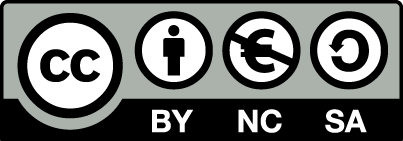In the frame of the PRESLHY project more than 100 experiments on hydrogen – air flame propagation regimes in a shock tube at cryogenic temperatures were made with the combustion tube at the KIT HYKA test site. More than half of the experiments were made at cryogenic temperatures (between approx. 90 K and 130 K). The rest experiments were conducted at ambient conditions as the reference data. It was however possible to provide experimental data at various H2 concentrations from 8 to 60 Vol. %H2 and 3 blockage ratios (BR = 0, 0.3 and 0.6). During the course of the experiments, many experimental difficulties and peculiarities specific for cryogenic temperatures were encountered. Critical conditions for flame acceleration to the speed of sound and to the detonation onset at cryo-temperatures were experimentally found. It was also found that the danger of hydrogen combustion and explosion in terms of maximum combustion pressure is much higher than at ambient temperatures because of several times higher density of the combusted substance. Then, even for sonic deflagration at cryogenic temperatures, the maximum pressure might be higher than the detonation pressure at ambient conditions. The data obtained in current work can be used for safety distance assessment for LH2 safety applications.
7zip-files: The naming convention of the corresponding 7zip-files largely follows the one provided in the Data Management Plan at ambient temperature 293K reads as follows: PT0-25.7z with PT indicating the PRESHY tube, the index 0 means a smooth tube with blockage ratio BR = 0%, then the test number 25 corresponds to certain hydrogen concentration of 15%H2. For cryogenic temperatures, it reads as follows: PT30C-25.7z with the meaning the PRESLHY tube experiment number 25 in an obstructed tube with blockage ratio BR = 30% at cryogenic temperature (prefix C). The experimental conditions should be addressed to the test number 25 with hydrogen concentration 15.2%H2 Each data file consist of original recording “.TPC”-file converted to a CSV format file with extension “.ASC”. The structure of these files is simple. They are columnar comma separated CSV tables. The first line contains the time and names of the channel: Time, TRG, P01, P02, P03, P04, P05, P06, P07, P08, P09, P10, P11, P12, P13, F01, F02, F03, F04, F05, F07, F08, F09, F10, F11, F12, F13, F14, F15 “TRG” is the trigger signal; “P” is the pressure sensor; “F” is the light sensor (InGaAs). The second line contains the unit for each sensor: s, V, bar, bar, bar, bar, bar, bar, bar, bar, bar, bar, bar, bar, bar, V, V, V, V, V, V, V, V, V, V, V, V, V, V The third line shows the start time of each channel. Because of the simultaneous data acquisition, the start times are identical for all channels and can be omitted. The “Time” column gives the time relative to the trigger event. The trigger event is recorded in the “TRG” column. In fact, it should be synchronized with a spark plug but actually, it can be a delay between the trigger signal and spark actuation. Even, it might be no ignition phenomena. Next lines give the signal value for each sensor versus time (in first column). WMF: The original results are also presented in graphic form as so called distance time diagrams. The diagram for each test reads as follows: PT0-24-long-RT.wmf With the same meaning as for the raw data file with an additional index long or short according to captured registration time and prefix RT means distance (radius) time diagram. WMF means the Windows Meta File format. This number corresponds to the test PT0-24 for smooth tube with blockage BR = 0% at ambient temperature wth hydrogen concentration 15.2%. The distance-time diagram shows pressure - and photodiode signals - time histories (horizontal axis, t in seconds) placed vertically in accordance with the real position in a tube (vertical axis, X in m). The pink line goes through the points corresponding to the flame arrival time based on photodiode signals (blue lines). The slope dX/dt of the flame trajectory in X-t coordinates is the flame velocity Uf.
cryogenic temperatures
combustion tube
flame propagation regimes
Friedrich, A.
Necker, G.
Denkevits, A.
Kuznetsov, M.
Jordan, T.
Views
Downloads
